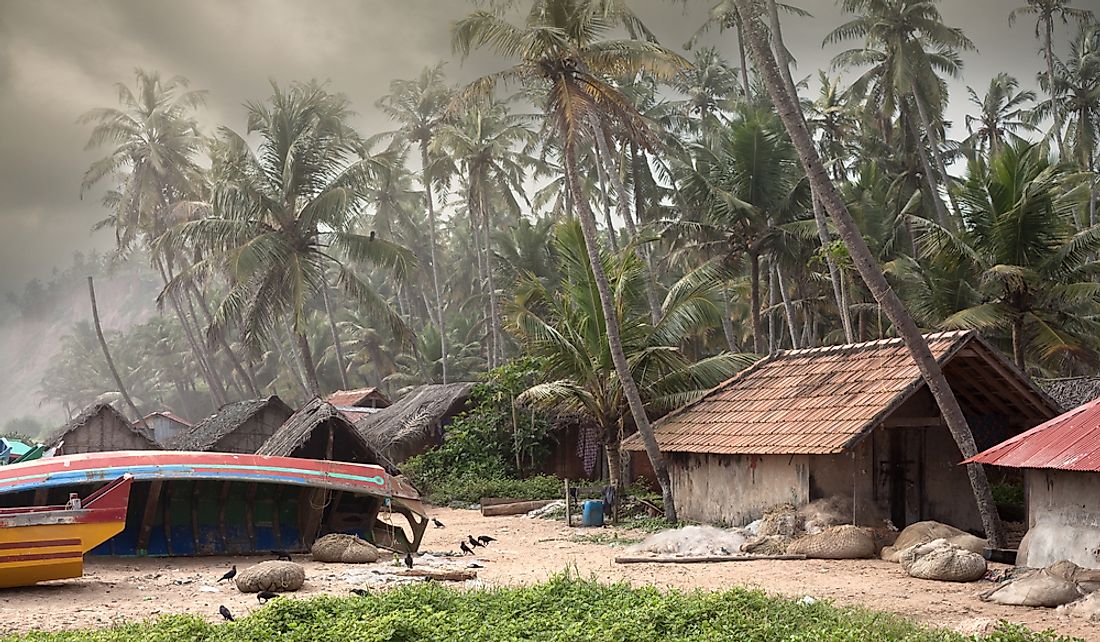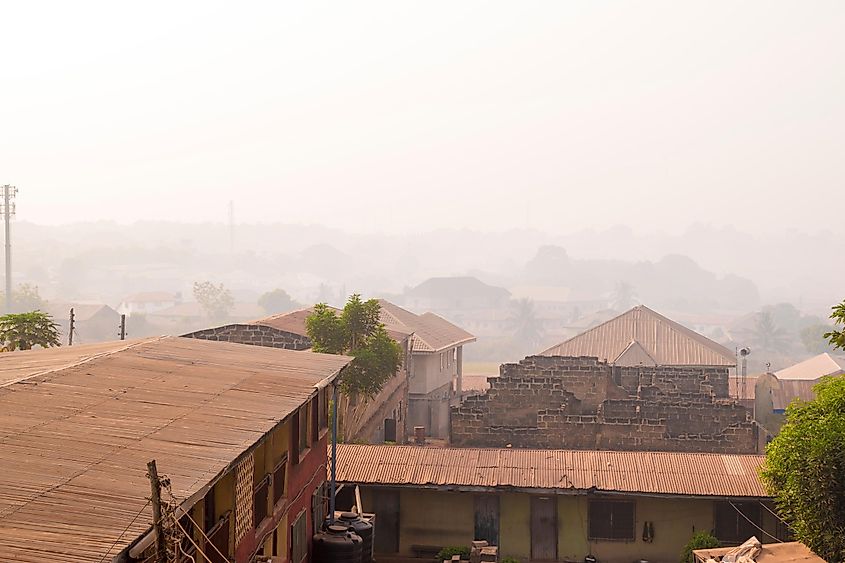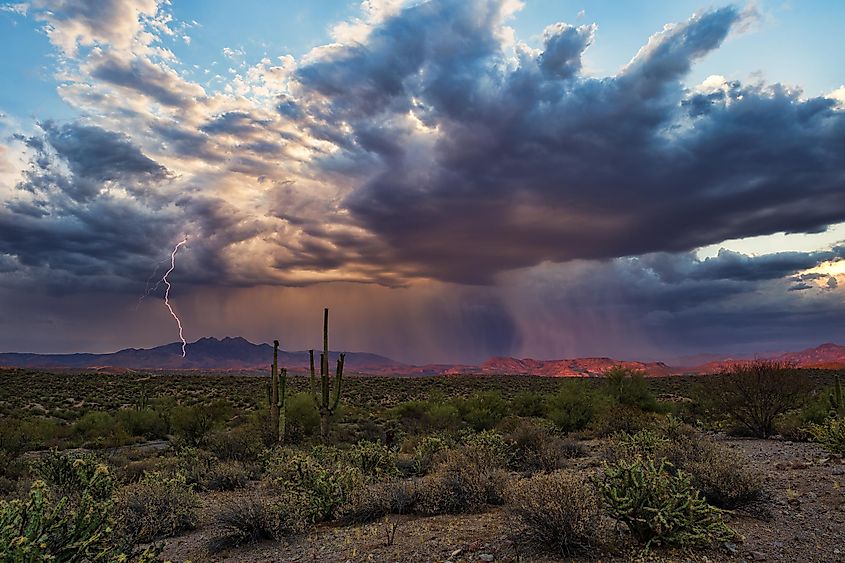Which Countries Experience Monsoons?

- Much of the world's rice and tea supply is grown during the wet monsoon season in China and India.
- Heavily relied on to produce electricity, monsoon season has been referred to as "India's finance minister."
- Pollution and fossil fuels deregulate the monsoon seasons, posing many adverse effects and often deadly consequences in some countries.
What Are Monsoons?
Coming from the Arabic word "mauism" meaning season and referring to a recurring rainy period in the year, monsoons occur when the air pressure over land is low and dry relative to the air pressure over the neighboring ocean. This imbalance causes a direction change in ocean air currents, and strong, rain-bearing winds begin blowing towards the land.
Most often, monsoons are associated with the countries that are surrounded by the Indian Ocean. The main components that allow for this natural phenomenon to occur include large landmass, a large body of water, and mountain ranges, such as the Himalayans, that tend to keep hot air and humidity within.
Diving Deeper
The ocean air stays cooler than the air over dense land surfaces that quickly heat up, dispersing air particles and creating a low-pressure system, relative to the high air pressure retained over the ocean. When the air pressure imbalance becomes too great, the air starts flowing from the area of high air pressure (ocean) to the area of low pressure (land). Thus, forceful winds are released towards the land, blowing humidity from the ocean and cloudy weather that dispels rain far beyond the coastlines of the affected areas during the monsoon season.
Two Sides of the Same Coin
There are wet and dry monsoons. Wet monsoons, what we think of when we think of monsoon, follow a hot season and start suddenly but end gradually, as the land cools down according to the season. Once the land begins to heat up again, a dry seasonal monsoon can potentially turn into a drought. Although monsoons are often associated with forceful winds and heavy rains, it is the largest differences in rainfall between dry and wet seasons that signal the presence of monsoons in a country. India and Asia experience the strongest monsoons, making them vulnerable to droughts, savage winds, and floods.

Top 3 Countries That Experience Monsoons
India (Rainfall: 12-390 inches/year)
With a massive land surface prone to scorching temperatures almost year-round, India experiences the most significant yearly monsoons. India sees many droughts as well as annual wet monsoons with up to 390 inches of rainfall a year. The vast potential difference in precipitation can cause devastating floods and crop-killing droughts.
Costa Rica (100-300 inches/year)
Costa Rica experiences most monsoons out of all countries on the American continent, with precipitation ranging from 100 to 300 inches in any given year. The rainy season is long, ranging from May to mid-December, with a significant spike September to November.
Nicaragua (100-250 inches/year)
Located centrally on the narrow portion of the South American continent, Nicaragua also experiences strong monsoon seasons. The rainiest months are June, September and October.
As a massive island country in the middle of the Indian Ocean, Indonesia follows fourth at 70-240 inches of rainfall a year.
Benefits for Agriculture and Electricity
Since many developing countries and regions do not have modern irrigation systems, they are heavily reliant on monsoon seasons to provide moisture for their crops at the right times. These countries utilize basins where the rain accumulates for adequate water supply for the year. Some of the most consumed products in North America, such as the rice from China and tea in India, rely on the summer monsoons in the producing country.
Among other countries, India depends on the wet monsoons to produce electricity through hydroelectric energy. The seasonal rainfall also gets stored in basins to keep providing electricity throughout the dry seasons. The monsoons are so important to the economy of this country that former president Pranab Mukherjee referred to the season as "India's true finance minister." monsoons are true economic drivers in this country, as they are responsible for running most industries.

Effects of Climate Change
The higher temperatures associated with climate change have adverse effects on crops around the world, potentially causing excessive droughts and unexpected floods by de-regulating monsoon seasons. Since many countries heavily depend on regular precipitation for adequate crop production and electricity, a shifted monsoon can devastate the economies, as much as a change in frequency and force with which they occur. Having adapted to certain growing seasons that coincide with the cycling of monsoons, the yield from crops can become greatly diminished and inadequate to feed the country, as well as export.
When the land heats up too quickly, the buried seeds become unyielding from the drought, which no amount of water can restore, even if followed by a heavy wet monsoon. Similarly, abundant and frequent rainfall can flood the crops that survived, damage people's homes and belongings, and kill thousands of people and livestock yearly.
The effects of climate change are often contradicting. It has been found that drought over India and Africa is linked to the wet monsoon season in East Asia. Therefore, if a monsoon comes over Asia at a faster rate, the drought is likely to come more quickly elsewhere. Nevertheless, the crop rotation season is disrupted in both places, with one receiving too much precipitation at the wrong time, and the other receiving too little.
Pollution
It has been found that pollution slow this dry and wet monsoon circulation and prevent rainfall in the summer. With pollution and fossil fuels linked to climate change, the countries whose economies rely on heavy industry shoot themselves in the foot, as they are often the countries that also rely on regular monsoon seasons.
Westernized countries are also at fault, having outsourced mass production of goods and necessities to China, India, and other countries in the east. Irregular monsoons worsen the conditions needed for adequate living, including food, shelter and economic output. This is why collective sustainable efforts are so important, as the worse the pollution becomes, the more out of balance monsoon seasons are thrown, and this has an impact felt around the globe.
Which Countries Experience Monsoons?
| Countries | Average rainfall per year, in inches, accouting for regional variations |
|---|---|
| Bangladesh | 47-118 |
| Benin | 40-51 |
| Bhutan | 55 |
| Burkina Faso | 23-35 |
| Cameroon | 100-160 |
| China | 40-80 |
| Costa Rica | 100-300 |
| Gambia | 35-43 |
| Ghana | 40-80 |
| Guinea | 40-155 |
| Guinea-Bissau | 70 |
| India | 12-390 |
| Indonesia | 70-240 |
| Japan | 60 |
| Liberia | 79-198 |
| Malaysia | 98-200 |
| Mali | 12-40 |
| Mauritania | 5-26 |
| Mexico | 23-39 |
| Myanmar | 98-196 |
| Nepal | 55 |
| Nicaragua | 100-250 |
| Niger | 9-30 |
| Nigeria | 70-170 |
| North Korea | 37 |
| Pakistan | 16 |
| Panama | 105 |
| Philippines | 39-197 |
| Senegal | 20 |
| Sierra Leone | 120-200 |
| Singapore | 92 |
| South Korea | 57 |
| Sri Lanka | 38-100 |
| Taiwan | 95 |
| Thailand | 57 |
| Togo | 35-80 |
| United States (Southern region only) | 12 |











